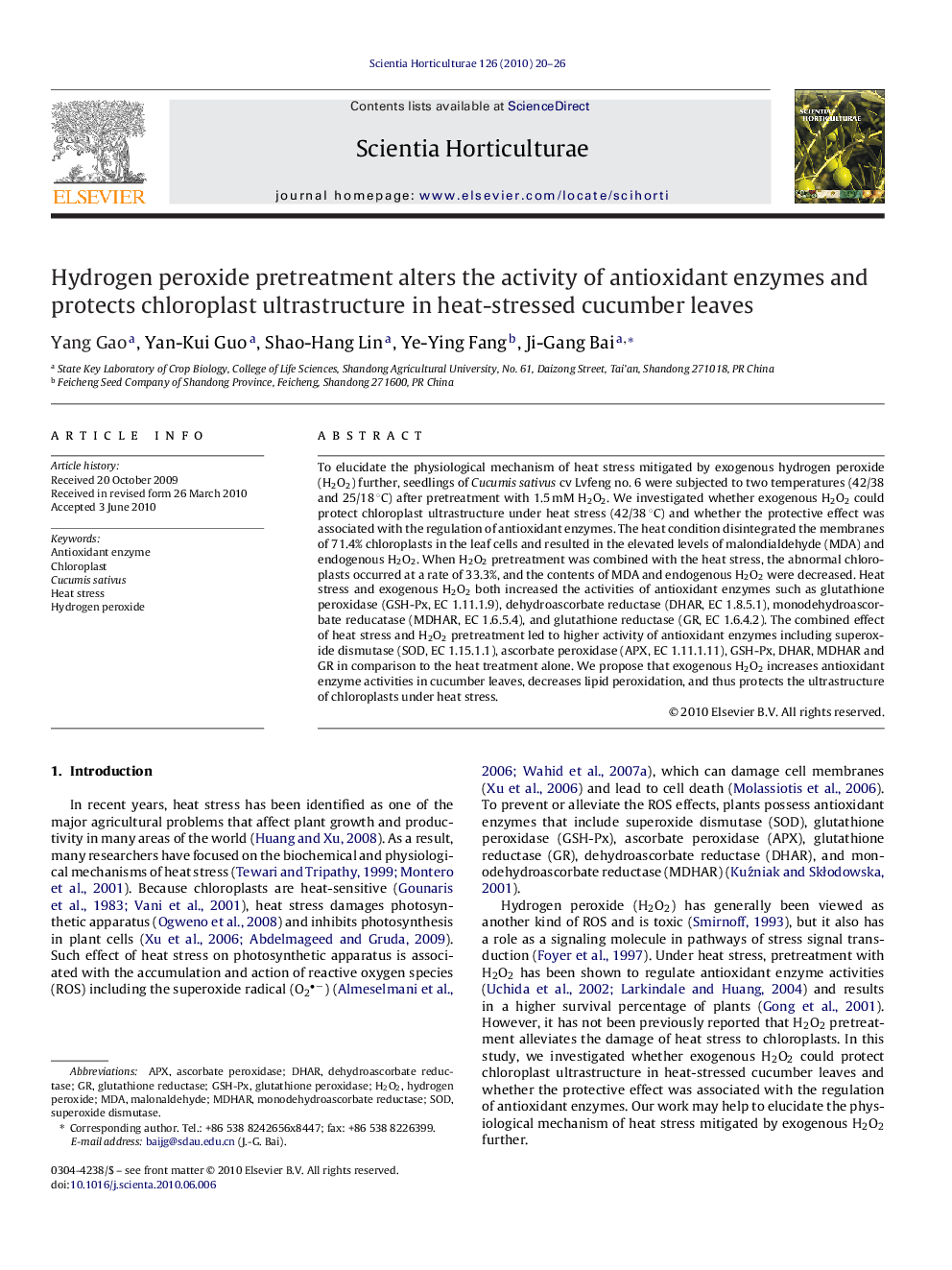| Article ID | Journal | Published Year | Pages | File Type |
|---|---|---|---|---|
| 4568433 | Scientia Horticulturae | 2010 | 7 Pages |
To elucidate the physiological mechanism of heat stress mitigated by exogenous hydrogen peroxide (H2O2) further, seedlings of Cucumis sativus cv Lvfeng no. 6 were subjected to two temperatures (42/38 and 25/18 °C) after pretreatment with 1.5 mM H2O2. We investigated whether exogenous H2O2 could protect chloroplast ultrastructure under heat stress (42/38 °C) and whether the protective effect was associated with the regulation of antioxidant enzymes. The heat condition disintegrated the membranes of 71.4% chloroplasts in the leaf cells and resulted in the elevated levels of malondialdehyde (MDA) and endogenous H2O2. When H2O2 pretreatment was combined with the heat stress, the abnormal chloroplasts occurred at a rate of 33.3%, and the contents of MDA and endogenous H2O2 were decreased. Heat stress and exogenous H2O2 both increased the activities of antioxidant enzymes such as glutathione peroxidase (GSH-Px, EC 1.11.1.9), dehydroascorbate reductase (DHAR, EC 1.8.5.1), monodehydroascorbate reducatase (MDHAR, EC 1.6.5.4), and glutathione reductase (GR, EC 1.6.4.2). The combined effect of heat stress and H2O2 pretreatment led to higher activity of antioxidant enzymes including superoxide dismutase (SOD, EC 1.15.1.1), ascorbate peroxidase (APX, EC 1.11.1.11), GSH-Px, DHAR, MDHAR and GR in comparison to the heat treatment alone. We propose that exogenous H2O2 increases antioxidant enzyme activities in cucumber leaves, decreases lipid peroxidation, and thus protects the ultrastructure of chloroplasts under heat stress.
